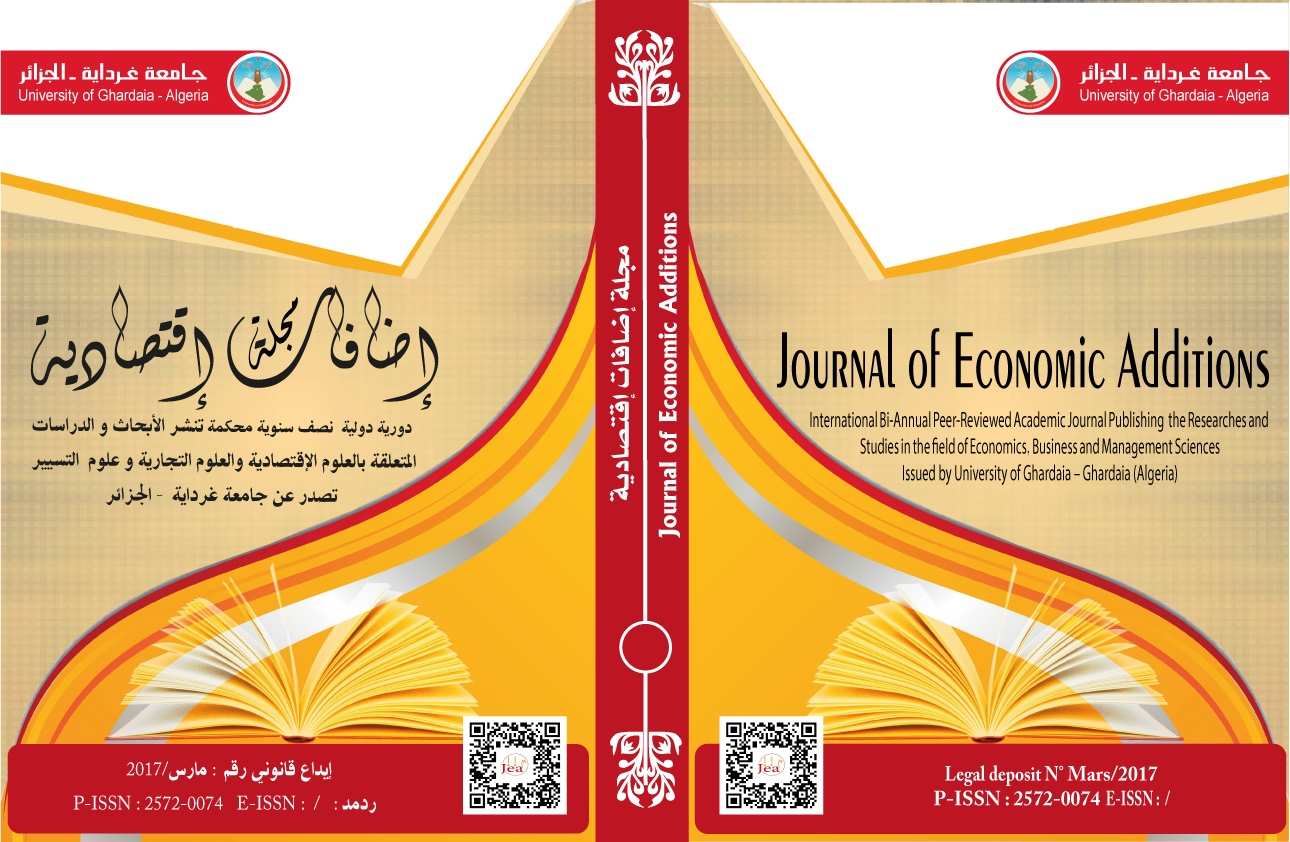المؤسسات الصغيرة والمتوسطة: بين تطبيق آليات الحوكمة ومشكل الفساد الإداري - دراسة ميدانية -
الملخص
تهدف هذه الدراسة الى ابراز أهمية المؤسسات الصغيرة والمتوسطة من أجل إنشاء وتطوير اقتصاد حديث وديناميكي قائم على المعرفة، وهذا بسبب قدرة هذه المؤسسات على تعزيز روح المبادرة ومهارات تنظيم المشاريع وبسبب قدرتها على التحلي بالمرونة والتكيف بسرعة مع السوق المتغيرة، وعلى إيجاد فرص عمل جديدة، وتقدم مساهمة كبيرة في مجال الابتكار ودعم التنمية الإقليمية والتماسك الاجتماعي، كما تقدم أيضا مساهمة كبيرة في نمو الناتج المحلي الإجمالي وخلق فرص عمل جديدة، كما تم أيضا التطرق إلى مشكل الفساد الإداري الذي يعيق تطور وتنمية مثل هذه المؤسسات الحساسة، حيث خلصت الدراسة إلى أن هناك علاقة عكسية بين آليات حوكمة المنظمات والفساد، معناه أنه كلما زاد تطبيق آليات الحوكمة داخل المؤسسات الصغيرة والمتوسطة قل الفساد فيها.
كلمات مفتاحية: مؤسسات صغيرة ومتوسطة، فساد إداري، حوكمة مؤسسات، أداء استراتيجي متوازن.
تصنيفات JEL: G 39 ، C12.
المراجع
Ades, A., & Di Tella, R. (1996). The causes and consequences of corruption: A review of recent empirical contributions. IDS Bulletin, 27(2),pp. 6-11.
De Jong, G., Tu, P. A., & Van Ees, H. (2012). Which entrepreneurs bribe and what do they get from it? Exploratory evidence from Vietnam. Entrepreneurship Theory and Practice, 36(2),pp. 323-345.
Faruq, H., Webb, M., & Yi, D. (2013). “Corruption, bureaucracy and firm productivity in Africa”. Review of Development Economics, 17(1),pp. 117-129.
Fisman, R., & Svensson, J. (2007). Are corruption and taxation really harmful to growth? Firm level evidence. Journal of Development Economics, 83(1),pp. 63-75.
Hoskisson, R. E., Eden, L., Lau, C. M., & Wright, M. (2000). Strategy in emerging economies. Academy of management journal, 43(3),pp. 249-267.
Hung, H. (2008). Normalized collective corruption in a transitional economy: Small treasuries in large Chinese enterprises. Journal of Business Ethics, 79(1-2),pp. 69-83.
Jain, A. (2001). Corruption: A review. Journal of Economic Surveys, 15(1),pp. 71-121.
Karadag, H. , 2016, The Role of SMEs and Entrepreneurship on Economic Growth in Emerging Economies within the Post-Crisis Era: an Analysis from Turkey, Journal of Small Business and Entrepreneurship Development, Vol. 4, No. 1, pp. 22-31.
Méon, P.-G., & Weill, L. (2010). “Is corruption an efficient grease?”. World development, 38(3),pp. 244-259.
National Credit Regulator (NCR), Literature Review on Small and Medium Enterprises’ Access to Credit and Support in South Africa, December 2011, pp. 1-92.
Neagu, Cibela, 2016, The importance and role of small and medium-size businesses, Theoretical and Applied Economics, Volume XXIII (2016), No. 3(608), Autumn, pp. 331-338.
North, D. C. (1990). Institutions, institutional change and economic performance: Cambridge university press.
Rose-Ackerman, S. (1997). Role of the World Bank in Controlling Corruption. Law & Pol'y Int'l Bus, 29(93).
Svensson, J. (2005). “Eight questions about corruption”. The Journal of Economic Perspectives, 19(3), pp.19-42.
Vial, V., & Hanoteau, J. (2010). Corruption, manufacturing plant growth, and the Asian paradox: Indonesian evidence. World Development, 38(5),pp. 693-705.




